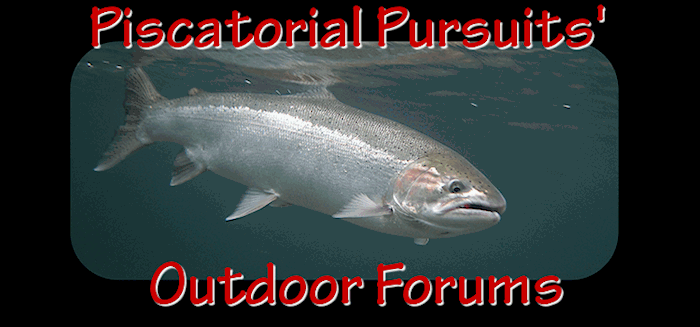Fatpat-
Don't know where the rumor comes from that the Tulalips are fishing in the river but have seen no evidence of that occurring. They do fish in 8-D (the Tulalip bubble) during that summer period. The vast majority of their catch in June and July is chinook. Of those chinook caught typically 95% of them are from their own hatchery; this is based on sampling of their catch. All the production from their hatchery have been 100% otolith marked so it is straight forward to determine the source of the fish they catch. Note they get the eggs from the Wallace hatchery.
In all the pre-season planning for recent salmon seasons (North of Falcon) have not had any in-river commerical season for the Tulalip tribes planned or even mentioned. In this day of ESA management fisheries that do not account for potential impacts are not likely to pass the review of NMFS (now NOAA fish).
Also have seen no evidence of significant decline in the number of summer steelhead returning to the Snohomish basin. The punch card information that is available (through 1999) indicates that the summer catch has remained relatively constant. The average annually sprot catch in the 1980s was 3,800 fish a year and in the 1990s it was 3,300 fish. The number of wild summer steelhead being passed upstream at Sunset Falls or spawning in the South Fork Tolt have generally increased since the early 1990s.
The data doesn't seem to support your accusations. What has occurred is a change in the summer run fishery, especially in the Skykomish. With the advent of side-drifting and a larger number of boats on the water an increasing percentage of the returning summer fish are being caught in June and early July downstream of Sultan. Thus the up river and mid-summer fisheries have likely declined.
Your observation of declining size in the returning hatchery summer steelhead is correct. In the 1970s the fish were rigorously selected for 3-salt fish. Thus there was a significant % of the 3-salt fish in the return. With the developement of the local brood stock in the early 1980s that selection was stopped (concerns for genetist about selective impacts on the brood stock and its long term genetic health). Thus the age structure is reverting back towards a more normal condition (younger).
Again have seen little evidence of gill net marks on many of the Snohomish steelhead. Heard the same complain this winter. A check of 138 steelhead at the Tokul Creek hatchery found that 79% (109) fish had no scars while 29 had scars or fresh injuries. Of those 29 only 1 had a gill net scar/injury (fresh).
The State seems to be trying to provide a recreational fishing opportunity on the abundance Wallace hatchery chinook while attempting to minimize the impacts on the naturally produced Skykomish chinook (Imapcts last year was estimated to have been less than 1%). Enjoy or not this additonal opportunity as you please but I fail to see where it will have significant impacts on your "traditional" fishery.
Tight lines
Smalma













 Previous Topic
Previous Topic Index
Index


